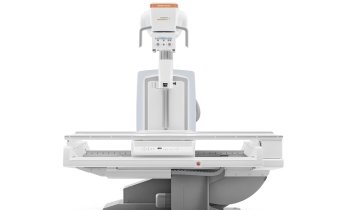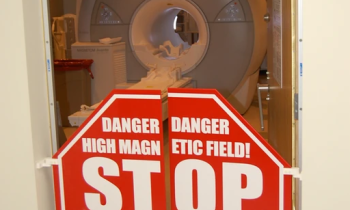The Hospital Survey on Patient Safety Culture
A Swiss and German researcher asked whether, where and how the Hospital Survey on Patient Safety Culture (HSOPS) is used in Europe and how relevant this survey – developed in the USA ten years ago and where it is widely accepted today – is in the European context.

Last October, one of the two researchers, Dr Antje Hammer, sociologist at the University of Cologne, presented the initial results of her study at the 12th Congress on Care Research, held in Berlin.
It all began with To Err is Human, a report by the Institute of Medicine (IOM) published in the USA in 2000. This showed an inordinately high number of medical errors in the country’s hospitals. To increase patient safety, the report concluded, a culture of safety needed to be established within hospitals. The Agency of Health Research and Quality (AHRQ) acted by commissioning the development of an instrument to measure hospital safety culture, the Hospital Survey on Patient Safety Culture (HSOPS).
This questionnaire is free and can be downloaded from the AHRQ website. With 42 questions (in English and Spanish) addressed to hospital staff it covers twelve relevant areas for safety culture. Versions for nursing homes, medical offices and pharmacies have been added. Participating hospitals can – but do not have to – enter their survey results in the AHRQ database once a year, to face national comparison. Moreover, AHRQ performs an annual analysis of the data; in 2012 1.128 US hospitals were evaluated – a substantial percentage of the 5,700 hospitals nationwide.
Since its inception in 2004, healthcare institutions worldwide increasingly use HSOPS and today, next to the Safety Attitudes Questionnaire (SAQ), this is considered the most widely applied safety culture measurement tool in healthcare. Dr Antje Hammer and her colleague Professor Tanja Manser, psychologist and Associate Professor SNSF at the University of Fribourg, Switzerland, looked at HSOPS application and found that the original survey was translated, adapted and used 44 times in 20 European countries.
Even if the researchers do not claim that their users list is exhaustive, their results do provide important insights: Spain tops the list with seven users, followed by Ireland, Italy and the Netherlands. In most cases, as in the USA, the survey measured the hospital safety culture – very few nursing homes and medical offices used it. While in the US most surveys are conducted on the initiative of the individual hospital, this is not so in Europe, where only a few institutions, e.g. in Spain and Italy, proactively worked with HSOPS. The majority of the hospitals conducted the survey in the framework of a research project.
In a second step, Dr Hammer and Prof. Manser examined whether HSOPS is suitable for European healthcare systems by comparing 14 of the studies that had evaluated the questionnaire. ‘We arrived at the conclusion that the questionnaire can be used very well in Europe although it needs to be adapted to each national environment,’ said Dr Hammer. Only very few aspects of the HSOPS are less suitable. ‘The questions concerning staffing and organisational learning don’t work that well in Europe,’ Dr Hammer explained, adding that she and her colleague have not yet looked into the reasons why this might be the case but they venture an educated guess: the different framework conditions in European hospitals. With regard to staffing, for example, the survey includes questions on agency staff but, in some European countries, such as Switzerland, the use of agency nurses is currently rather rare.
The researchers thus conclude that, in Europe, HSOPS is useful and suitable to gain a first impression on the safety culture in a hospital. Thus they strongly recommend that HSOPS application as well as studies on the survey be coordinated and the parties involved be linked in a network. The concrete adaptation of HSOPS needs a balanced view of the healthcare framework and suitable translation – linguistic and content – into the national context. ‘In addition we recommend including other important aspects, such as the staff’s perception and attitudes on mistakes by colleagues or advanced training and improved knowledge regarding safety issues,’ Dr Hammer says, adding: ‘currently such questions are not in HSOPS but in our opinion they are crucial aspects of hospital safety culture.’
Nevertheless, one basic question remains to be answered: To date, 13 years after the demand of the IOM and 10 years after the introduction of HSOPS, there is no systematic analysis if there is indeed a relationship between a hospital’s safety culture and patient safety.
A meta-analysis performed by Patricia Groves (pub: 2012; Western Journal of Nursing Research) did not indicate a significant correlation albeit the meta-analysis was based on a very small data pool. No matter, though, whether the safety culture in a hospital directly affects patient safety outcomes, HSOPS no doubt raises awareness among hospital staff. In its 2012 report AHQR describes a change over time for 650 hospitals that submitted data more than once.
Profile:
Dr Antje Hammer is a state-registered nurse and sociologist. Since 2008 she has been a research associate at the Institute for Medical Sociology, Health Services Research and Rehabilitation Science (IMVR) at the University of Cologne. For her dissertation, she analysed data of the German version of the HSOPS, specially adapted for medical directors.
In her latest project, she collaborated in the EU-funded research project Deepening our Understanding of Quality Improvement in Europe (DUQuE), focusing on European hospitals.
She was national coordinator (Germany) and supported the IMVR as partner in the DUQuE project. Her main research focuses on organisational culture, safety culture, patient safety and healthcare quality.
19.12.2013











